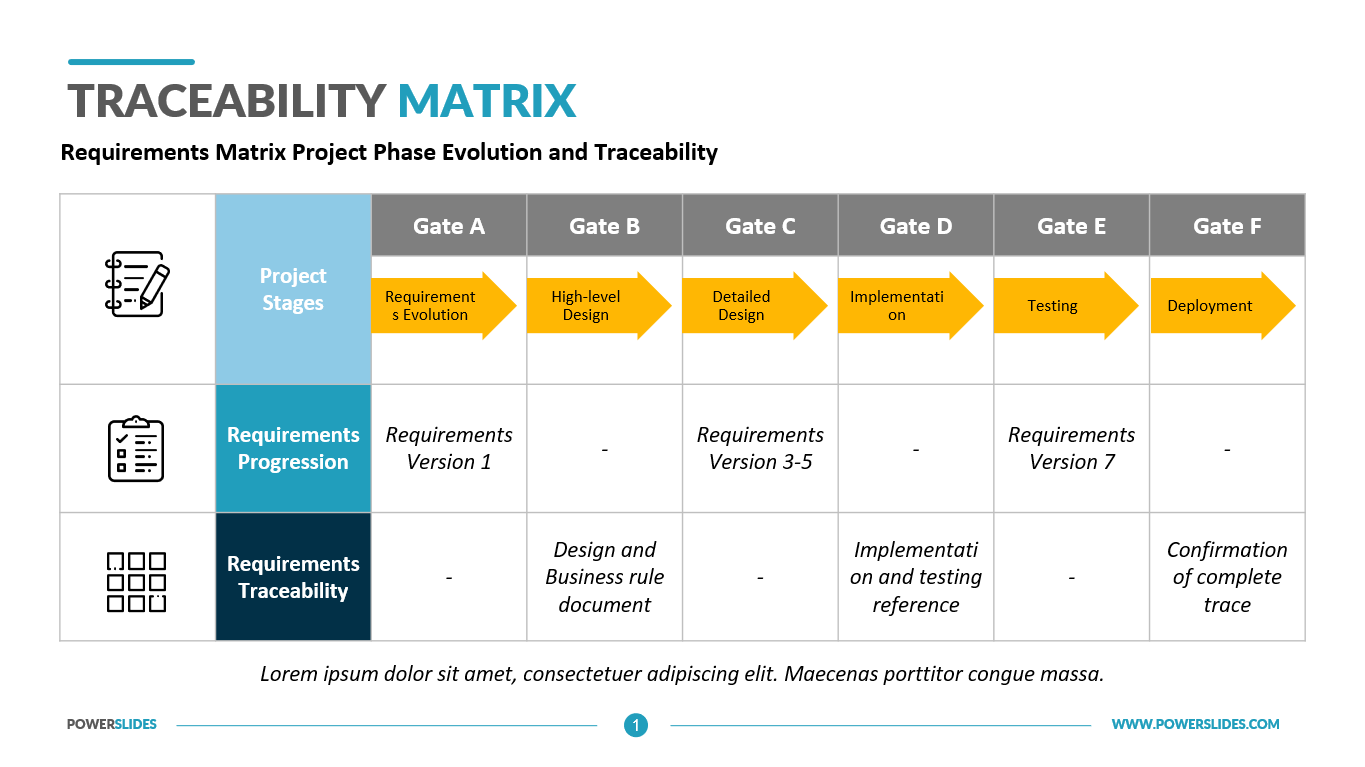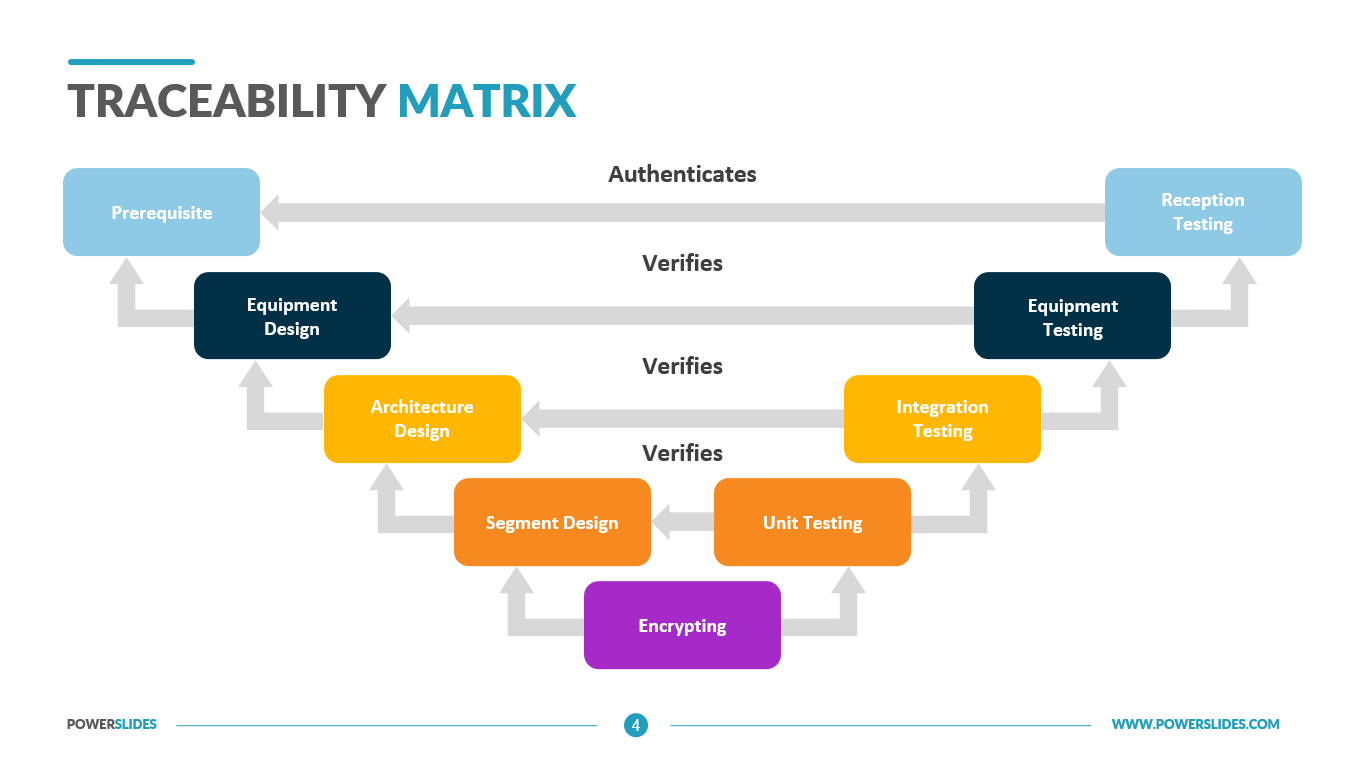A traceability matrix is a tool that shows the relationships between different items in a project, such as requirements, defects, or test cases. It is often used to ensure that all requirements are being met and to track the progress of a project.
The matrix is typically set up as a table with each row representing a unique item and each column representing a different aspect or characteristic of that item.
What is Requirement Traceability Matrix?
A Requirement Traceability Matrix (RTM) is a tool that helps you trace the requirements of a project from the start to the end.
A traceability matrix is a document that details the technical requirements for a given test scenario and its current state. It helps the testing team understand the level of testing that is done for a given product.
It allows you to see how each requirement is related to the other requirements, as well as how it is related to the different phases of the project. It helps you ensure that all of the requirements for the project have been met, and that you haven’t missed any important ones.
The traceability process itself is used to review the test cases that were defined for any requirement. It helps users identify which requirements produced the most number of defects during a testing cycle.
Not only does this show areas in need of improvement, but it also helps mitigate future roadblocks and identify process weaknesses.
The matrix is usually set up as a table with the requirements listed in one column and the different phases of the project listed in the other.
For each requirement, you can indicate whether it has been implemented, tested, and verified. This helps you keep track of the status of each requirement and makes it easier to identify any problems or gaps in the process.
In short, a requirement traceability matrix is a useful tool for managing the requirements of a project and ensuring that they are all met in a timely and efficient manner.

Why is the Requirement Traceability Matrix important for Software Development and other projects?
Using an RTM can help identify any missing or incomplete requirements, which can save time and resources in the long run.
The Requirement Traceability Matrix (RTM) is an important tool for managing requirements in software development and other projects. Some of the benefits of using an RTM include:
- Ensuring completeness: The RTM helps to ensure that all requirements have been identified and that there are no gaps or overlaps in the requirements.
- Tracking changes: The RTM helps to track changes to requirements throughout the project, which helps to ensure that all stakeholders are aware of any changes that have been made.
- Managing scope: The RTM helps to manage the project scope by ensuring that all requirements are properly documented and understood by all stakeholders.
- Facilitating testing: The RTM helps to link requirements to test cases, which makes it easier to ensure that all requirements have been tested.
- Providing traceability: The RTM provides traceability between requirements, design, implementation, and testing, which helps to ensure that all project deliverables are aligned with the requirements.
Overall, the RTM is an essential tool for ensuring that software development and other projects are completed successfully, on time, and within budget.
What do you include in a requirements traceability matrix?
Create a simple chart with the following columns:
- Requirements: Add sub-columns for marketing requirements, product requirements, and system-level specifications (if applicable).
- Testing: Add a sub column for test cases and test runs.
- Deviation: Add a sub-column for any issues
How to Create A Requirement Traceability Matrix
1. Gather All of The Requirements
The first step in creating an RTM is to gather all of the requirements for the project.
This may involve reviewing project documents, such as the project charter or requirements specification, and consulting with stakeholders to identify all of the requirements for the project.
2. Organize the requirements into a table
Once you have gathered all of the requirements for the project, you will need to organize them into a table.
The table should have columns for the requirement ID, requirement description, and status (e.g., “in progress” or “completed”).
You may also want to include additional columns for information such as the associated test cases or the person responsible for implementing the requirement.
3. Identify the relationship between each requirement and the project phases
Next, you will need to identify the relationship between each requirement and the different phases of the project.
For example, you may need to indicate which requirements are associated with the design phase, which ones are associated with the development phase, and so on. This can help you see how each requirement fits into the overall project plan and timeline.
4. Update the matrix as the project progresses
As the project progresses, you will need to update the RTM to reflect the current status of each requirement.
This may involve changing the status of a requirement from “in progress” to “completed,” or adding new requirements as they are identified. It is important to keep the RTM up to date to ensure that all of the requirements for the project are being met.

Types of Traceability Matrix
There three types of Trace Ability Matrix that has been applied to Software Engineering.
1. Forward Traceability
Forward traceability is a feature of a requirement traceability matrix (RTM) that helps ensure that a project is progressing in the desired direction and producing the right product.
It verifies that each requirement is being applied to the product and that each requirement is being thoroughly tested.
The RTM maps requirements to test cases, which helps ensure that all requirements are being adequately tested. This is important for ensuring the quality and reliability of the final product.
2. Backward and Reverse Traceability
This type of traceability verifies that any work being done (such as coding, designing, testing, etc.) is specified in the requirements and aligns with the project’s overall goals.
3. Bi-directional traceability
Bi-directional traceability is a feature of a requirement traceability matrix (RTM) that combines both forward and backward traceability.
Bi-directional traceability helps analyze the impact of changes in requirements on the work product, as well as the impact of defects in the work product on the requirements.

Compliance Matrix
If you need to prove compliance with regulations, a traceability matrix can be a useful tool. This is also known as a compliance matrix.
Compliance regulations can be complex, but by tracking the requirements from these regulations in a compliance matrix, you can more easily understand what needs to be developed and tested. This can also help you track your tests and test results in relation to these requirements.
If you work in a heavily regulated industry, creating a compliance matrix can also make it easier to prepare for audits.
You can create the traceability matrix as you go along, it will be simpler to document any updates or changes that are made.
After all, you can’t prevent audits from happening, but you can make it easier to show that you have followed all of the necessary compliance regulations. This can help you avoid additional costs during your audit.
Conclusion
In conclusion, a requirement traceability matrix (RTM) is a tool that is used in software development and other types of projects to ensure that all requirements are being met.
An RTM lists all of the requirements for the project in a table, along with the status of each requirement.
By using an RTM, project managers can track the progress of the project, identify any missing or incomplete requirements, and identify any issues or dependencies that need to be addressed.
The use of an RTM can help ensure the success of a project by helping to ensure that all requirements are being met, track the progress of the project, identify any missing or incomplete requirements, and identify any issues or dependencies that need to be addressed.
